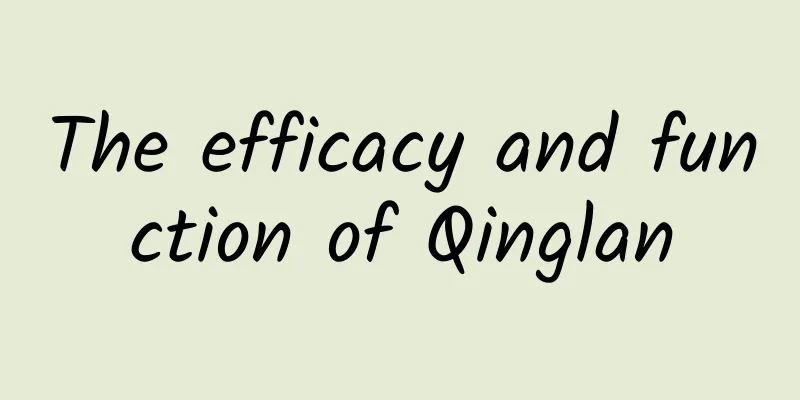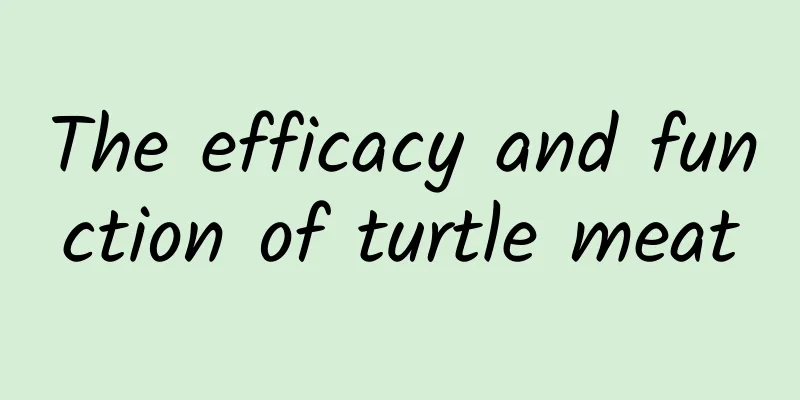The efficacy and function of Qinglan

|
Speaking of Qinglan, I believe many friends know it, because it has a good effect in treating diseases. However, some friends do not know what the specific effects of Qinglan are, so let’s take a detailed look at the effects of Qinglan here. [Source] Medicinal material source: the whole herb of the plant Qinglan of the Lamiaceae family. [Original form] Qinglan, perennial herb. Stems several, arising from rhizomes, quadrangular, pubescent; short branches arising from leaf axils, with small leaves. Leaves opposite; sessile or almost sessile; leaf blade linear or lanceolate-linear, 3.4-6.2cm long, obtuse at apex, narrowly cuneate at base, midrib sparsely pubescent on both sides or later becoming glabrous. The whorl inflorescence grows at the upper 4-6 nodes of the stem, 2.5-6cm long, more or less densely packed; the bracts are ovate-elliptic, half the length of the calyx or shorter, with a sharp tip and densely covered with eyelashes; the calyx is lip-shaped, 10-12mm long, with densely covered with short hairs below the middle part and sparsely covered on the upper part; the upper lip is 3-lobed, with the middle tooth ovate-elliptic, slightly wider than the lateral teeth, and the lateral teeth are triangular or broadly lanceolate; the lower lip is 2-lobed, with lanceolate teeth, each tooth has a sharp tip, covered with eyelashes, often purple; the corolla is blue, 1.7-2.4cm long, lip-shaped, and covered with short soft hairs on the outside; there are 4 stamens, the rear pair is longer than the front pair, the anthers are forked apart and covered with short soft hairs; the ovary is 4-lobed, the style is slender, and the stigma is 2-lobed. The nutlets are oblong and smooth. The flowering period is July, and the fruiting period is August-September. [Habitat distribution] Ecological environment: Grown in mountain meadows or rocky grasslands. [Chemical composition] The whole plant contains flavonoid glycosides such as sorbarin, scutellarein rhamnoside and linarin. 【Nature and flavor】 Spicy; bitter; cool 【Functions and indications】 Soothe wind and clear away heat; cool blood and detoxify. Mainly used for colds, headaches, sore throats, coughs, jaundice, and dysentery [Usage and Dosage] For oral use: decocted in water, 9-15g. 【Excerpt】 Chinese Materia Medica Based on the above description of Qinglan, it can be seen that Qinglan has many benefits to the human body, and there are many ways and uses for it. The pharmacological effects of Qinglan can be used to treat corresponding diseases. |
<<: The efficacy and function of flax seeds
>>: The efficacy and function of Qinglongteng
Recommend
This setting in "Guardians of the Galaxy 3" has sparked heated discussion. Is there really an "anti-Earth" behind the sun?
In the recently released "Guardians of the G...
Is the area east of Shandong like an Arctic expedition? Why do cold currents and blizzards "favor" the Shandong Peninsula?
On December 20, Yantai and Weihai in Shandong Pen...
The efficacy and function of cardamom
Traditional Chinese medicine is very helpful in t...
Hericium erinaceus, does it look like a monkey head?
The Food and Agriculture Organization of the Unit...
How can you avoid being cheated when buying jadeite in a scenic spot?
Audit expert: Zhu Guangsi Member of Beijing Scien...
The efficacy and function of Huluzi
The medical value of Huluzi is beyond our imagina...
Effects and functions of Quercus chinensis kernel
The Chinese medicinal material Quercus oleifera k...
Do you think that's just a cough? It could be asthma!
"The symptom of asthma is shortness of breat...
The infection rate among couples is as high as 16%. Is traveling really a breakup curse?
A survey conducted by a travel platform showed th...
Are peanuts harmful or beneficial? How to eat them more healthily?
Peanuts are not unfamiliar to us. They are also k...
The efficacy and function of Viola
As a traditional Chinese medicine, do you know th...
There is a huge fire pit that has been burning for nearly 50 years. It is difficult to extinguish it.
Nature always brings us incredible surprises. In ...
Have humans captured signals from extraterrestrial civilizations? The search for the unknown
When we look up at the stars, we naturally wonder...
Why do airplanes run on kerosene, cars run on gasoline, trucks run on diesel, and ships run on heavy fuel oil?
Why do airplanes run on kerosene, cars run on gas...
When the water surface connects to the surface of the universe, is unpowered propulsion possible?
Ships are the oldest means of water transportatio...









